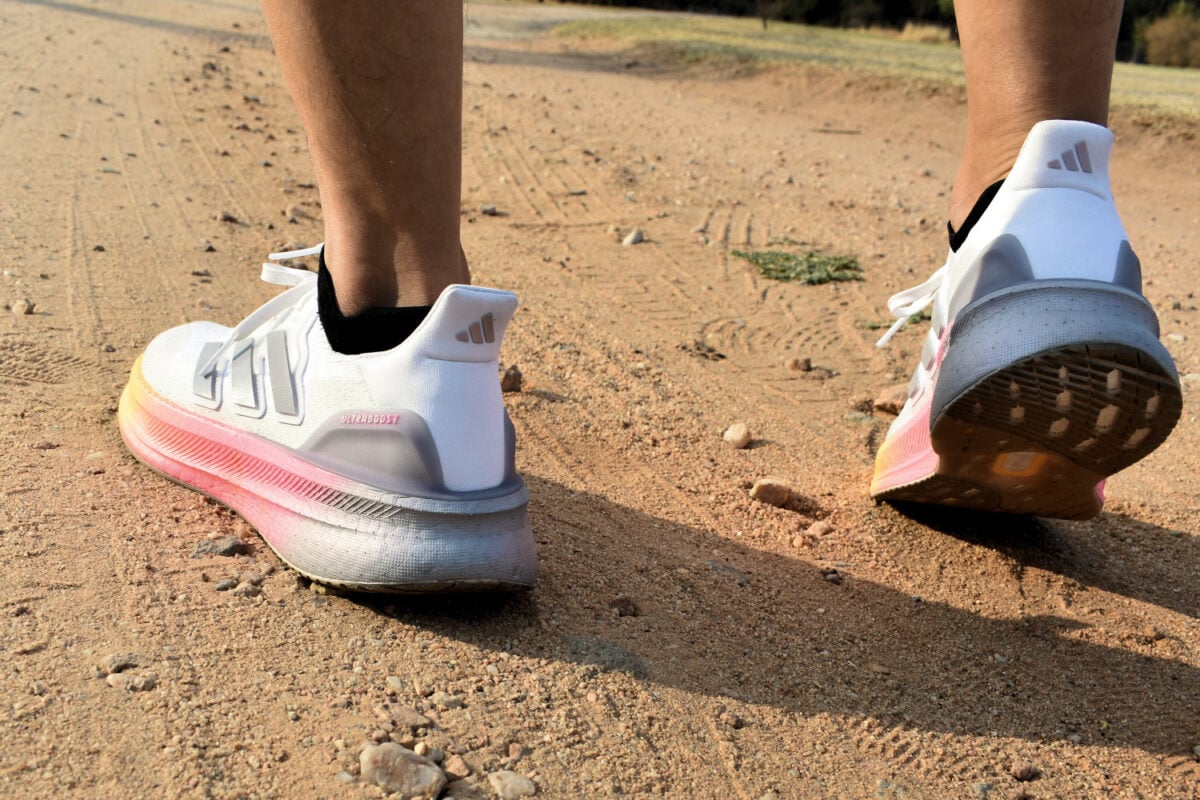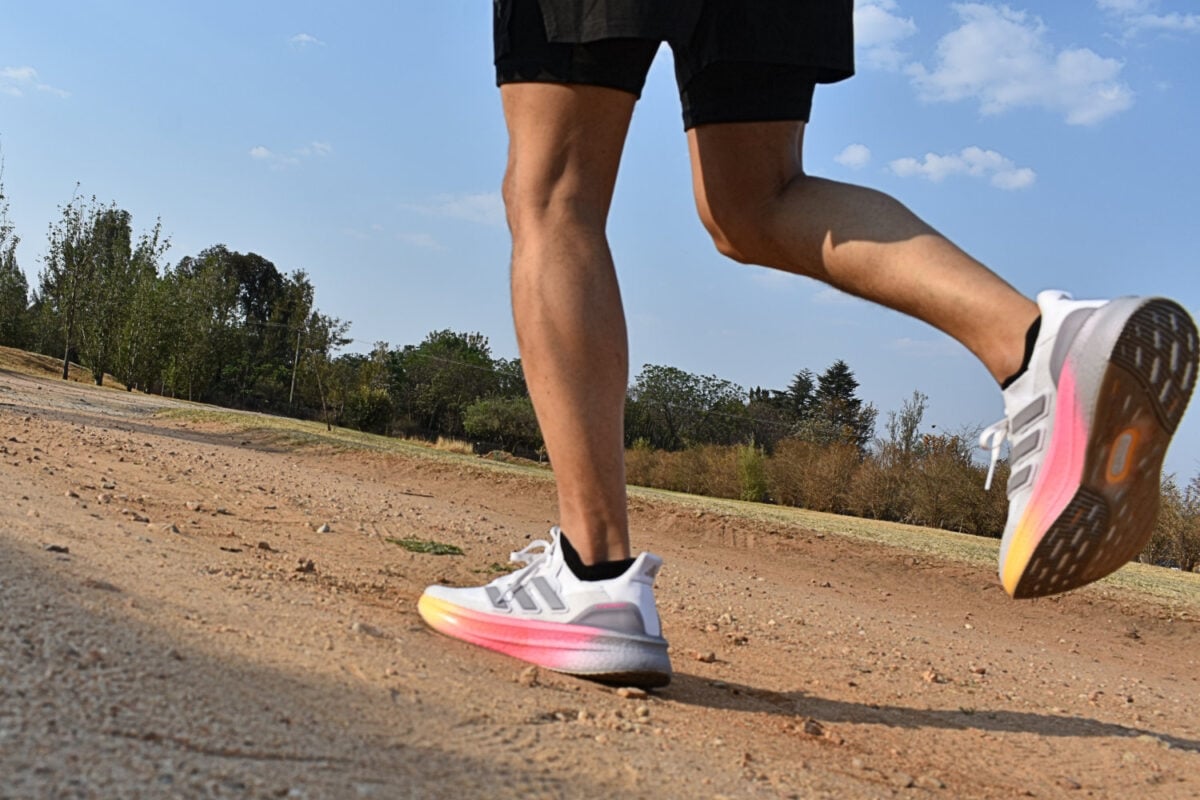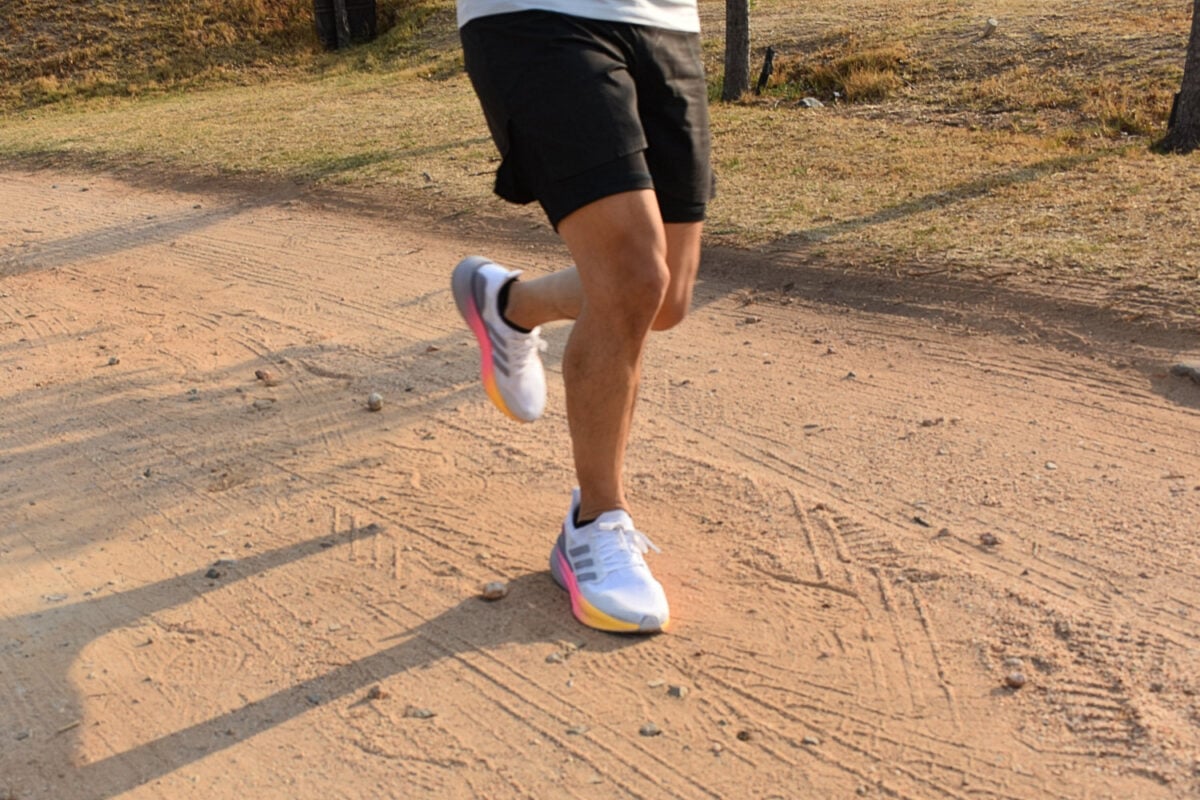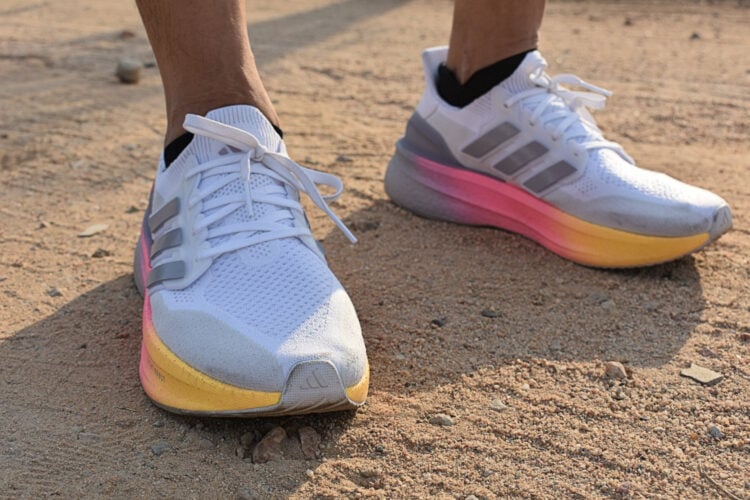I’ve had my fair share of running shoes in recent years. Having been an avid runner for nearly three decades, I’ve put many of these shoes through the wringer. I’ve learned and come to appreciate that it isn’t a one-shoe-fits-all, with each runner having specific requirements, including the type of running or training. Having recently received the newly launched adidas Ultraboost 5 for review, I was coming out of a rough winter, with minimal running and needing to get back into, almost like I was a beginner. The Ultraboost 5 was the exact shoe I needed for this.

Design, Build and Quality
The Ultraboost 5 is a change in approach to the previous-generation models. The previous generation’s Ultraboost Light, 22 and 21, featured incremental improvements with each new iteration. While these were still great for its time, the Ultraboost 5 is quite the overhaul.
That said, the design ethos still shines through from the range, much like how the Porsche design has changed over the years without noticing too drastic a change until you view the progressions. The Ultraboost 5 has a more pronounced toe spring angle, with the forefoot down to 9mm in thickness.
The Ultraboost Light (essentially the Ultraboost 23) was a lighter version of the two previous iterations. It was reasonably lightweight at under 300g for each shoe, even with its 30mm heel and 20mm forefoot. However, the midsole drop on the 23 is still maintained at 10mm, even with a thicker heel at 31mm and forefoot of 21mm.
Despite the added midsole thickness, it’s even lighter at 292g per shoe. It may not seem like much, but it sheds roughly 3% weight per shoe overall. A quick run at 5,000 steps equates to an impressive 35KG additional weight lifted that has been saved. Some would argue that the shoe could shed even more weight, especially compared to the adiZero Adios Pro 3, which is a further 70g lighter. However, the difference in style and objectives between the two shoes doesn’t fit the argument, in my opinion.
In terms of aesthetics, the Ultraboost 5 features a redesigned PrimeKnit upper. The updated material is softer while improving breathability. It still includes the moulded cage design synonymous with the Ultraboost range.
Several colourways are available for the shoe, including all-white and all-black versions. The colourway I received, featured in most marketing campaigns, is the Cloud White / Glory Grey / Lucid Pink variant. The upper is predominantly white, with the cage and TPU heel stabiliser in grey. Most of the colour pops come from the midsole, which is from grey to pink and then to an orange and yellow finish.
Overall, there are a few updates and enhancements to the Adidas Ultraboost 5, making it stand out from the rest of the Ultraboost pack while still keeping its design ethos at the core.

Comfort
There are a few improvements on the shoe when it comes to comfort. A new injection heel counter has been introduced to reduce heel irritation. It doesn’t have much visual representation but has a slightly different shape and a softer feel.
The 2023 variant of the Ultraboost, the Light, introduced the Light BOOST midsole. Over the years, the Ultraboost material delivered improved energy returns in each stride. As a result, however, this led to an increase in weight. Runners must choose between having more energy return when running to boost overall performance or opt for a lighter option for better endurance. Thankfully, there’s less of a dilemma in choosing the latest iterations.
Ultraboost 5 introduces the Light BOOST V2. I already mentioned that it’s an improvement of roughly 3% year-on-year but around 30% in weight reduction over earlier Ultraboost shoes. adidas also states that the midsole is the highest in terms of energy return but doesn’t specify the percentage improvements. Still, after a few runs with the Ultraboost 5 and a quick switch back to the Ultraboost Light, you’ll almost instantly feel the difference.
When a shoe performs well, you can often take a few aspects of its design for granted. Plenty of moving parts function well together, making it easier to get up and go and repeat. The insole is much thinner than most running shoes. It measures just 3.1mm compared to the average, which ranges between 4.5 and 5.0mm. This makes for more room in the foothold but doesn’t affect your comfort.
There is plenty of padding on offer. From the inside of the shoe with a thin layer to the collar and heel tab with a slightly thicker approach. There’s enough padding not to have to worry about it.

Performance
As mentioned in the introduction, when switching to the adidas Ultraboost 5, the review period was my first run in earnest in months. The results were pretty amazing.
For starters, running felt much more comfortable, with a slightly more spacious fit. It also didn’t constrain the circulation when the run progressed to higher intensities and felt more aerated.
There’s minimal discomfort even after an hour or more of running. Most of this comes down to how stable the shoe is under load and toe-off. Its stability and balance make precision running a fabulous training day shoe. This improvement is mainly due to the inclusion of the Torsion System. It makes for more accurate running, almost assisting the runner through the entire gait cycle. The technology has been featured in several adidas running shoes over the decades since its first release but makes a welcome return on the Ultraboost 5 to improve the stability.
However, the more stable ride does come at the cost of speed performance. You won’t be pushing PBs here, but that’s not too much of an issue for an everyday running shoe.
Another aspect of its stability is the shape of the midsole. While most modern running shoes tend to feature a more pointed profile, the Ultraboost has remained relatively even. As mentioned, it has a shallow 10mm midsole drop with the forefoot at 9mm. This means it can also double as an everyday shoe to perform daily activities without too much strain on your ankles and calves.
While Adidas boasted the Continental rubber on its Ultraboost outsole in previous iterations, it takes a more backseat role on the latest shoe. However, it still offers a brilliant grip that adds to the shoe’s stability.

Is the adidas Ultraboost 5 Worth It?
Undoubtedly, adidas continues to improve on its Ultraboost range year-on-year. The adidas Ultraboost 5 delivers an overhaul over the previous generation that would make upgrading a must. It’s lighter, more comfortable and offers much more stability to make daily running less strain. You can purchase the shoe online from adidas.
The Review
adidas Ultraboost 5
The adidas Ultraboost 5 improves over the previous generation shoes in all aspects, a lighter construction and improved stability.
PROS
- An everyday running and walking shoe
- More stability and balance
- Breathable Primeknit
- Crafted from 20% recycled material
- Additional padding and cushioning
CONS
- Not ideal for faster runs











